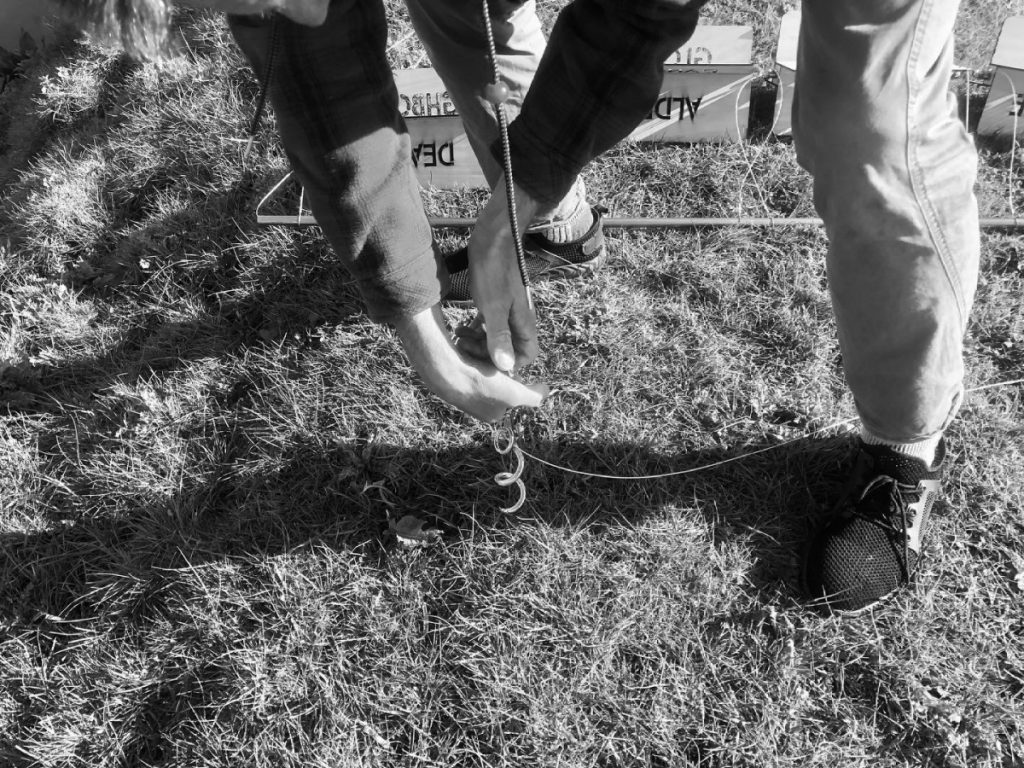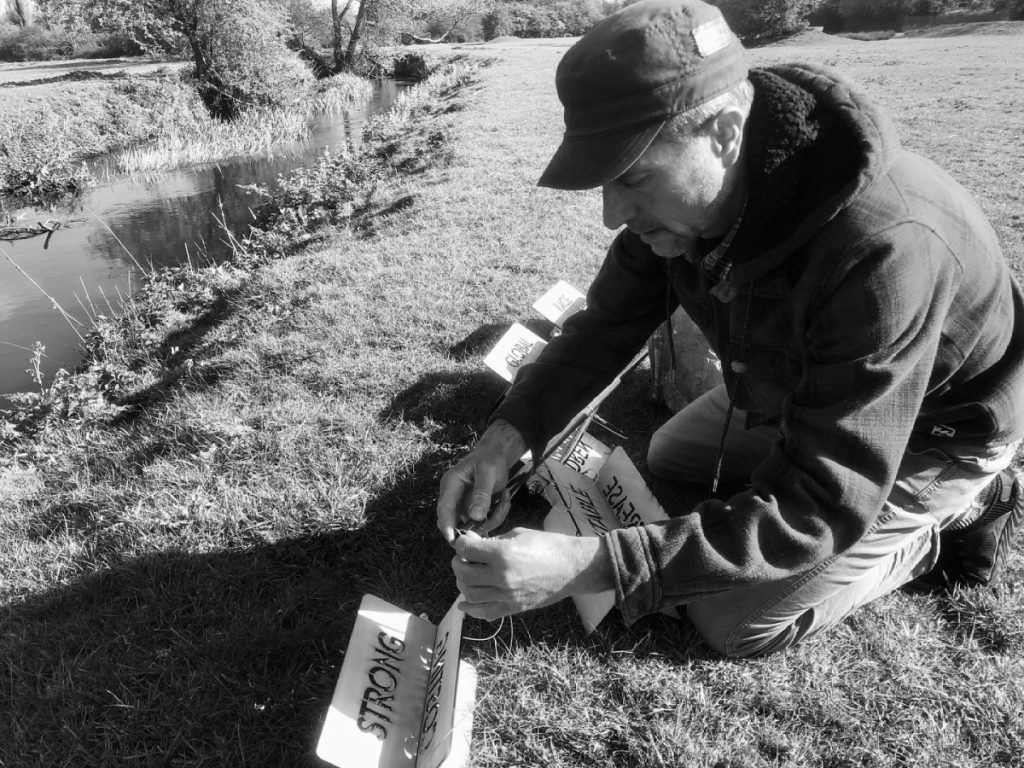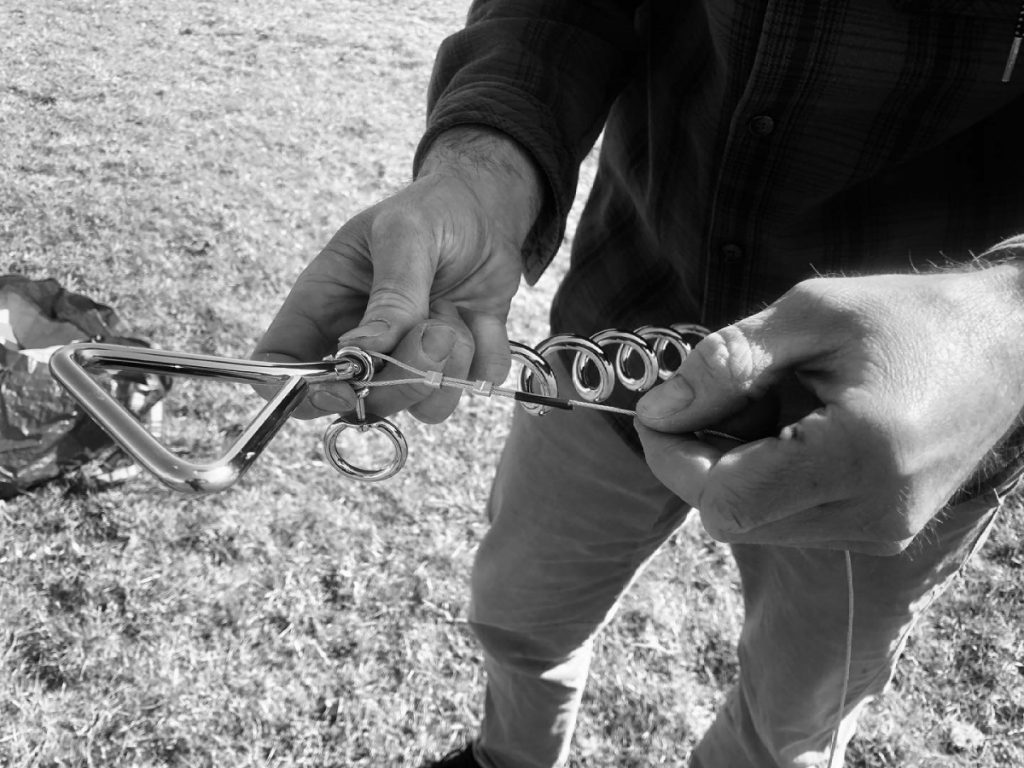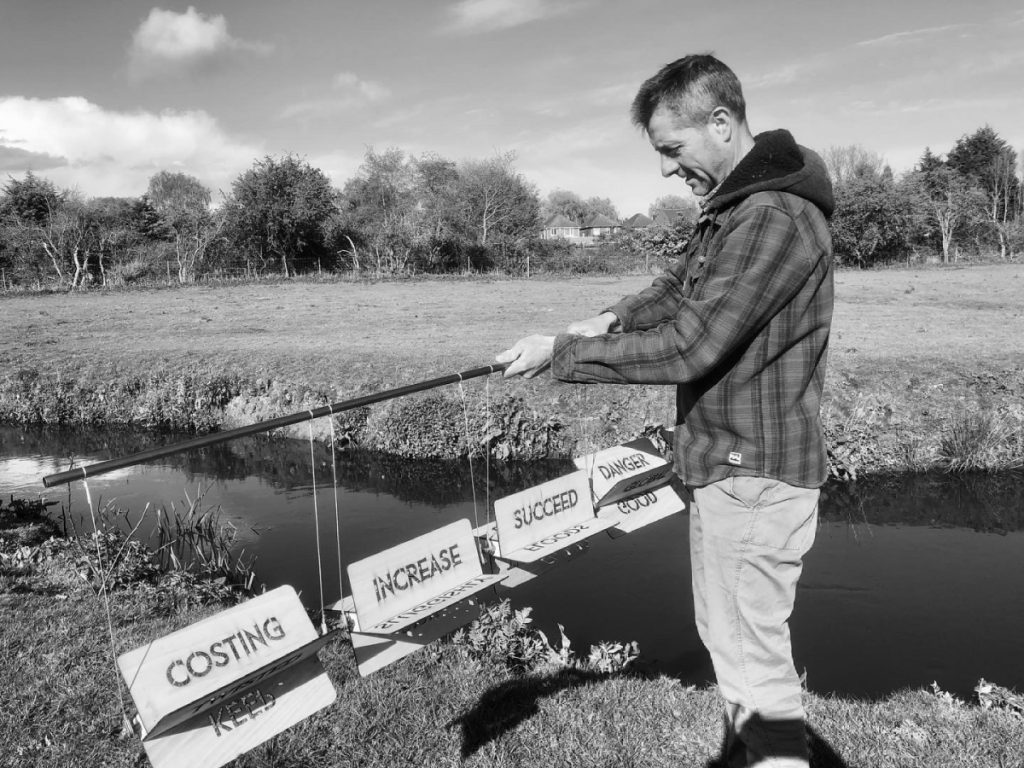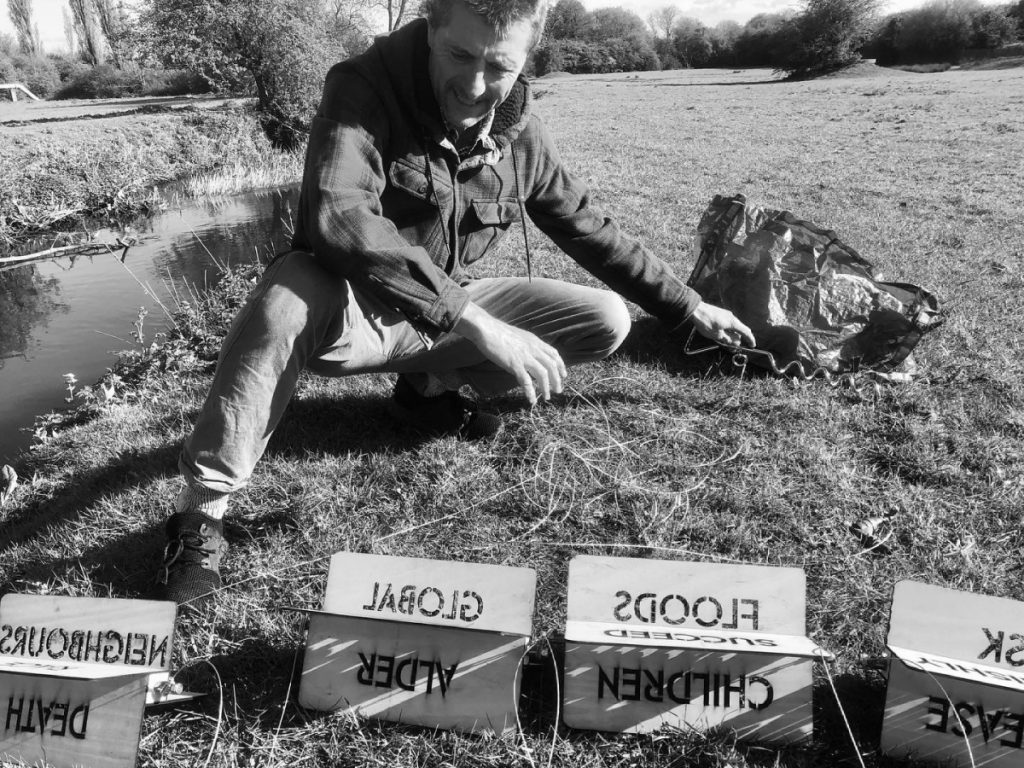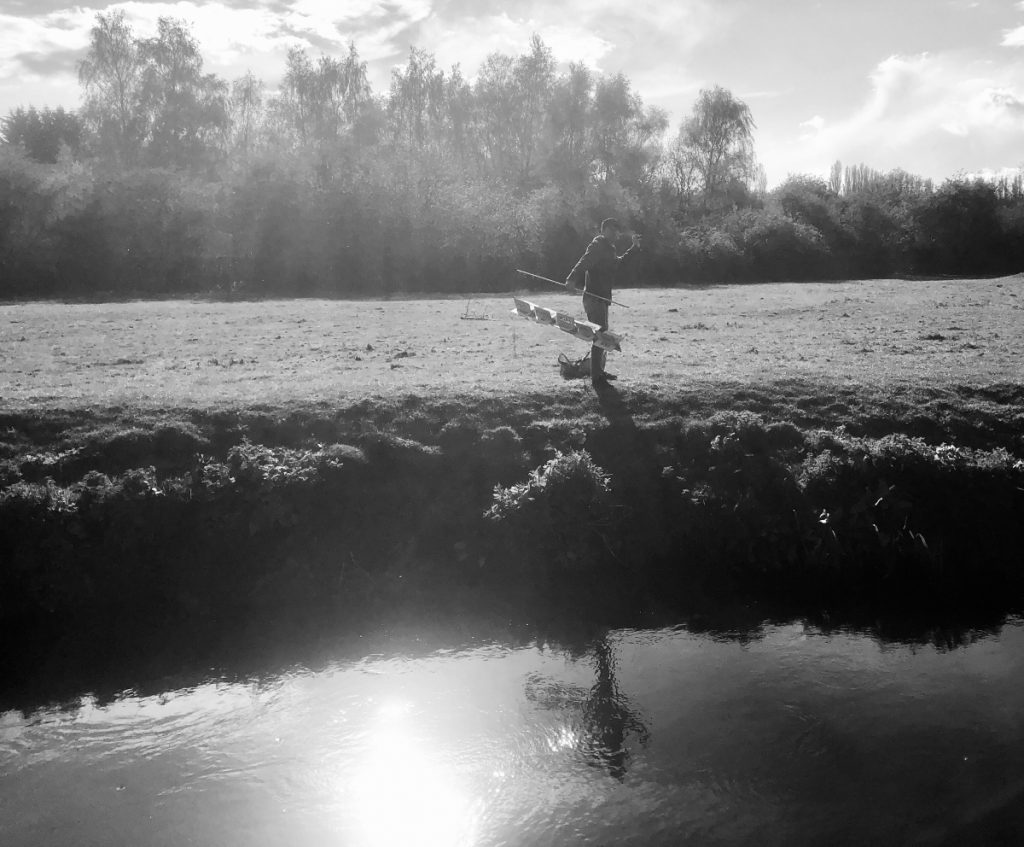Two days before the planned drone shoot I went to the river to test the full set of waterwheels for the first time. Even though I could have managed this on my own I took my partner to share the experience but also to document the process with photographs. I was slightly nervous which was interesting as I found myself asking whether it really mattered if the paddles stayed in position and turned as expected. But they did, everything worked and it was hugely satisfying to see the idea, engineering and location all come together successfully.
The most striking feeling I had was the insignificance of the piece in the larger landscape. I had become very involved in the building of the piece, focussing on small details and quality and in the studio it seemed to assume a large scale but once in the field it was insignificant. The landscape remained in total control of what I had done, yes, I had interrupted the river but it was a minor dent, a blip in time. My appreciation of land art was immediately changed, not only in the enormous engineering feat of some of the larger examples (e.g. Christo and Jeanne-Claude) but also in how site specific land art actually disrupts the landscape. I don’t think my work is a major disruption as only two of us experienced it, and if the work itself was invisible only minor ripples on the water surface would be visible. I have taken the energy in the water and used it for my own purposes, or maybe the energy of the water is been transcoded into words that are rising from the depths.
The piece had a fragility about it once installed and looked awkwardly out of place but had an intentionality about that enhanced its artistic quality. It seemed to take on a life of its own that was out of my control, which was one of the drivers behind this entire project. Standing back and letting nature take over felt very conclusive as if my work was done.
The only design element I need to consider is the importance of the height of the waterwheels about the water. I found a critical height was necessary to ensure the paddles turned sufficiently though I’m confident that I can achieve this through careful manipulation of the fixtures on the bank and the tensioning device I can use.
The photographic record below has been converted to black and white to evaluate whether a similar block of photographs would be suitable to accompany the installation in the booth. Black and white carries a narrative of a past event and I like how they show the full scale of the river and its environs. These images convey a finesse in the preparation which I believe is important: choice of location, layout of components, attaching to the landscape and throwing over the water. I particularly like the fixture being screwed into the ground as it’s a metaphor for extracting something from the landscape, i.e. some form of human intervention, which references the HS2 threat I began the project with. The juxtaposition of vegetation against harsh steel is very potent.
Summary & next steps
I’m ready for the drone shoot in one day’s time as this was all very successful. A few minor tweaks to the waterwheel height and we are good to go.
